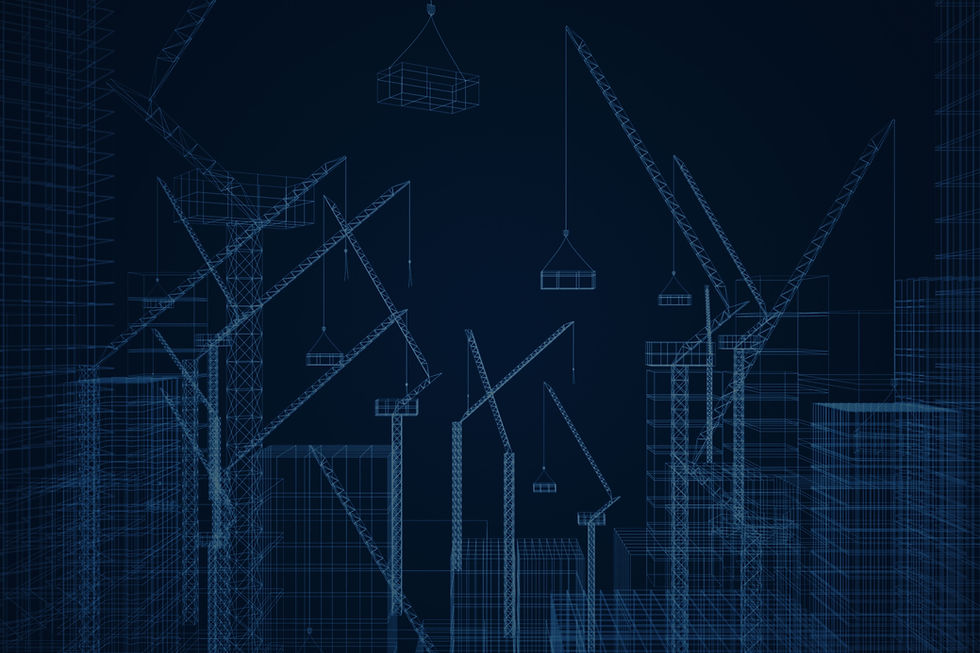Reality Capture Revolution: How Digital Scanning is Transforming Civil Engineering
- FERAS AKKAM
- Jun 17
- 2 min read
Reality Capture Revolution: How Digital Scanning is Transforming Civil Engineering
The civil engineering industry is undergoing a digital transformation, with reality capture technologies rapidly moving from niche applications to mainstream tools. Once reserved for specialized projects, 3D laser scanning, photogrammetry, LiDAR, and other reality capture methods are now becoming integral to how engineers plan, inspect, and maintain infrastructure—particularly aging or undocumented assets such as bridges, tunnels, and wastewater plants.

What is Reality Capture?
Reality capture refers to the process of digitally recording the physical world to create highly accurate 3D models. These models are generated using tools like laser scanners, drones, and high-resolution cameras, and can be processed into point clouds or mesh models that represent physical structures in extraordinary detail. Unlike traditional surveying methods, reality capture allows engineers to visualize, analyze, and simulate infrastructure in its exact as-built condition.
Why It Matters in Civil Engineering
Much of the world’s infrastructure was built decades ago—often without complete or accurate documentation. Over time, renovations, weathering, and usage degrade structures, making inspection and restoration difficult. Traditional inspections can be time-consuming, labor-intensive, and sometimes hazardous.
Reality capture solves many of these challenges:
Speed and Efficiency: Engineers can scan an entire bridge or tunnel in a fraction of the time compared to manual surveying.
Safety: Drones and mobile scanners can access hard-to-reach or hazardous areas, reducing risks to personnel.
Accuracy: Sub-millimeter accuracy in 3D models ensures precise measurements for rehabilitation or retrofitting.
Digital Archives: Scans can be archived and reused for lifecycle management, inspections, and progress tracking.
Real-World Applications
Bridge Inspections: Engineers use terrestrial LiDAR to scan deteriorating bridge elements, identifying cracks, misalignments, or corrosion without shutting down traffic.
Wastewater Facility Upgrades: Complex piping and tank systems can be digitized for clash detection and retrofit planning.
Tunnel Maintenance: Underground tunnels, especially those with limited access or ventilation, benefit immensely from non-invasive scanning.
Historical Preservation: Reality capture also helps restore culturally significant civil structures without damaging original materials.
Integration with BIM and AI
When integrated with Building Information Modeling (BIM) systems, reality capture data enhances collaboration across stakeholders. Engineers can overlay scanned data onto design models, identify discrepancies, and run simulations for stress or fluid dynamics. Further, with the rise of AI and machine learning, these models can be used to detect structural anomalies, predict deterioration, and optimize maintenance schedules.
The Future is Digital
As the costs of scanners and processing software continue to drop, even smaller firms are adopting reality capture as a standard practice. Regulatory bodies and infrastructure owners are also beginning to mandate digital scans for documentation and compliance.
The shift toward reality capture isn't just a technological upgrade—it represents a fundamental change in how civil engineers understand, maintain, and enhance the built environment. With precision, safety, and data at the forefront, reality capture is setting a new standard for the future of infrastructure.





Comments